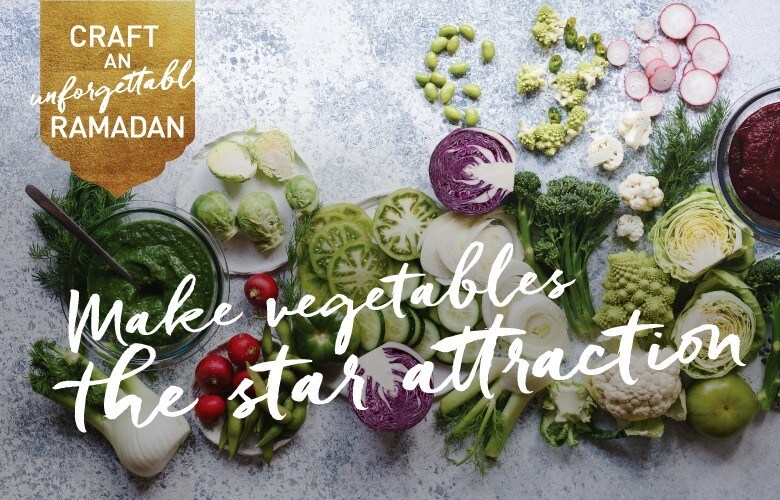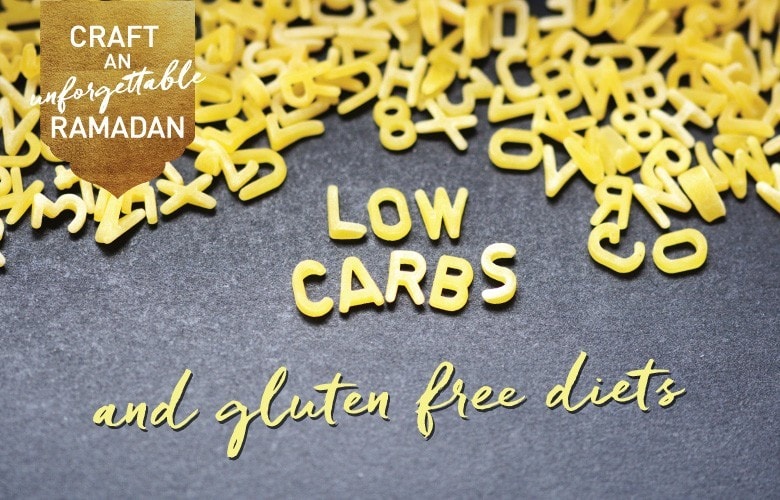It’s important that as chefs we keep up with the latest food trends at all times of year, including during Ramadan. One of the most effective ways to set your Ramadan menu apart from the competition is by offering something a bit different. While there’s a place for traditional cooking, we know that diners are also keen to try new dishes, trendy ingredients and presentation techniques.
With that in mind, we asked UFS chef Trishanna Persaud to share her thoughts on the key food trends, recipes and ingredients for Ramadan, as well as her advice for saving you and your team time and money and making life easier in the kitchen.
1 Make vegetables the star attraction

Vegan dishes and vegetable-focused meals will be taking centre stage on Iftar buffets and menus this year as diners increasingly look to cut down on their meat consumption and seek out plant-based alternatives. As well as offering health benefits for customers, this is a great opportunity to manage food costs and support local farmers by ordering regional vegetables were possible (zucchini, aubergines and cauliflower are all good options).
Dishes that showcase trendy ingredients such as kale will be popular at Iftar in particular; our recipe for falafel 3 ways includes a grated beetroot and blanched kale option and we’ve also given hummus a healthy twist by adding kale and cumin.
For general vegetarian and vegan cooking, Knorr Aromat Seasoning and Knorr Lime Powder Seasoning are fantastic, convenient products that enhance the flavour of vegetables, soups and stir-fries quickly and easily.
2 Low-carb and gluten-free diets

Although catering for diners on low-carb or gluten-free diets can seem daunting, there are still plenty of exciting alternatives to regular bread, rice, pasta and potatoes.
Our recipe for Jeweled Cauliflower ‘Couscous’ is a good place to start and features riced cauliflower with raisins, apricots, spinach and pistachios. We’ve served it with harissa and honey-glazed salmon, but it is hearty, filling and delicious enough to work as a stand-alone dish on a buffet or set menu. This Super Quinoa Pilaf (served with fragrant Chicken Tikka) meanwhile mixes brown rice with nutritious red quinoa for a lighter alternative to plain rice and proves that healthy can still mean tasty.
For gluten-free baking and desserts, nut flours are a great substitute for regular flour and you could also use a spiralizer to make ‘pasta’ from courgettes and butternut squash.
3 Savoury-sweet flavours

The current trend for pairing savoury and sweet flavours and ingredients together in appetizers, mains courses, desserts and drinks is here to stay. This approach works really well with a number of Middle Eastern ingredients such as sumac, zaatar, molasses, dates, pomegranates and more.
If you’re keen to add this idea to your menu, our tangy Tamarind and Date Chutney (served as a dip with these Healthy Samosas) and the Salted Caramel Sauce that accompanies our Gluten-free Pistachio Friands both offer great results.
Chef Trishanna’s tips for saving time and money in the kitchen
Using high-quality convenience products such as Knorr Lime Seasoning Powder can help reduce your workload, save you time and help maintain consistency, without compromising on taste.
Many of these items are also warmer and chiller-stable. What this means is that you can make up a batch of Knorr Cream of Mushroom Soup and keep it warm in a bain marie for several hours or use Knorr Tomato Powder to prepare a rich tomato sauce and then keep it chilled in the fridge, ready to reheat during service.
Knorr Vegetable Powder and Chicken Powder also offer a quick and easy way to add depth to your dishes without having to make fresh stock, while Knorr Aromat Seasoning can be used in so many ways to add instant flavour to your cooking.

